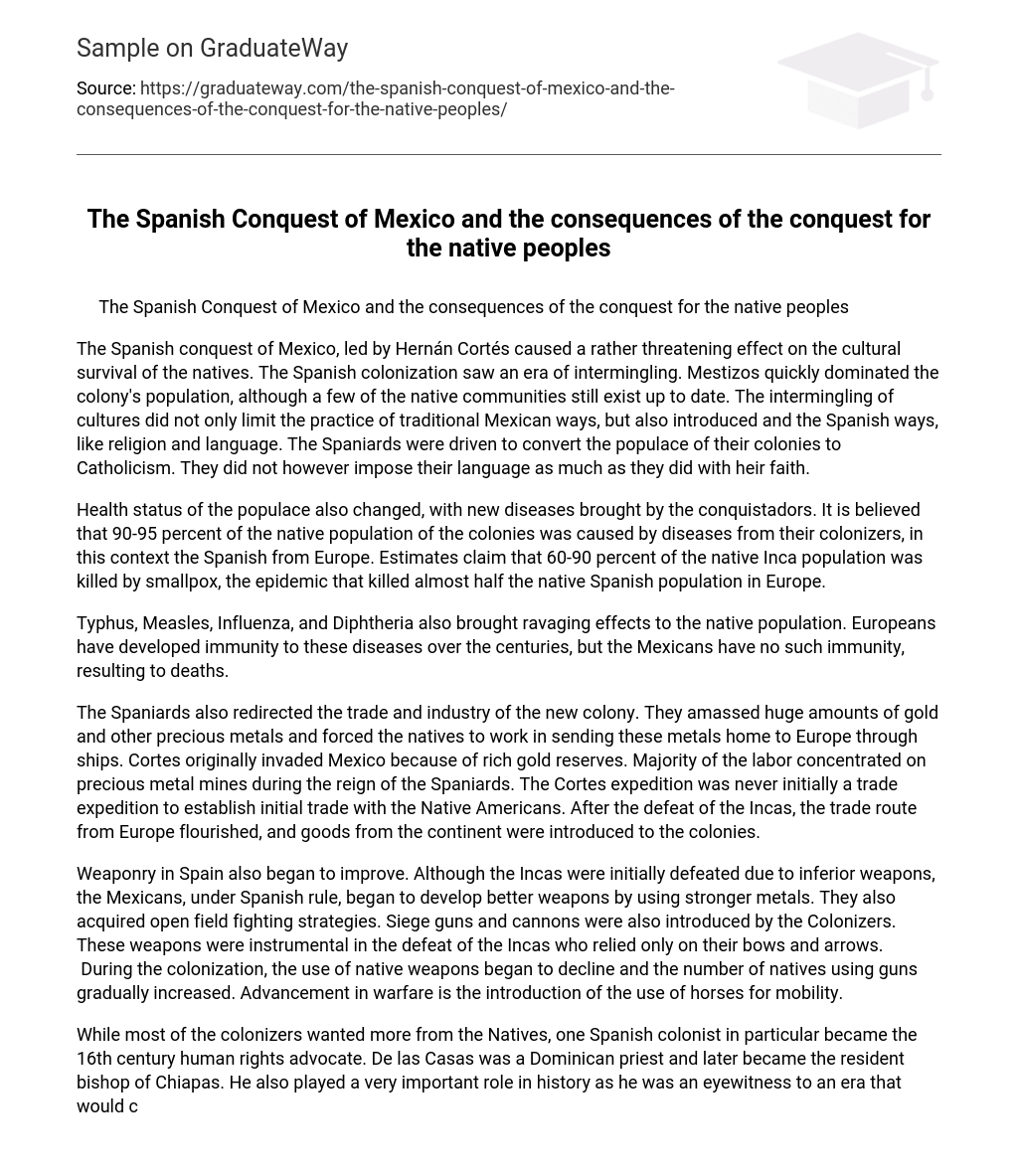The Spanish conquest of Mexico, led by Hernán Cortés caused a rather threatening effect on the cultural survival of the natives. The Spanish colonization saw an era of intermingling. Mestizos quickly dominated the colony’s population, although a few of the native communities still exist up to date. The intermingling of cultures did not only limit the practice of traditional Mexican ways, but also introduced and the Spanish ways, like religion and language. The Spaniards were driven to convert the populace of their colonies to Catholicism. They did not however impose their language as much as they did with heir faith.
Health status of the populace also changed, with new diseases brought by the conquistadors. It is believed that 90-95 percent of the native population of the colonies was caused by diseases from their colonizers, in this context the Spanish from Europe. Estimates claim that 60-90 percent of the native Inca population was killed by smallpox, the epidemic that killed almost half the native Spanish population in Europe.
Typhus, Measles, Influenza, and Diphtheria also brought ravaging effects to the native population. Europeans have developed immunity to these diseases over the centuries, but the Mexicans have no such immunity, resulting to deaths.
The Spaniards also redirected the trade and industry of the new colony. They amassed huge amounts of gold and other precious metals and forced the natives to work in sending these metals home to Europe through ships. Cortes originally invaded Mexico because of rich gold reserves. Majority of the labor concentrated on precious metal mines during the reign of the Spaniards. The Cortes expedition was never initially a trade expedition to establish initial trade with the Native Americans. After the defeat of the Incas, the trade route from Europe flourished, and goods from the continent were introduced to the colonies.
Weaponry in Spain also began to improve. Although the Incas were initially defeated due to inferior weapons, the Mexicans, under Spanish rule, began to develop better weapons by using stronger metals. They also acquired open field fighting strategies. Siege guns and cannons were also introduced by the Colonizers. These weapons were instrumental in the defeat of the Incas who relied only on their bows and arrows. During the colonization, the use of native weapons began to decline and the number of natives using guns gradually increased. Advancement in warfare is the introduction of the use of horses for mobility.
While most of the colonizers wanted more from the Natives, one Spanish colonist in particular became the 16th century human rights advocate. De las Casas was a Dominican priest and later became the resident bishop of Chiapas. He also played a very important role in history as he was an eyewitness to an era that would change the world. Christopher Columbus’ journal was copied by de las Casas and an abstract from it was also made by de las Casas. The abstract would later become the sole surviving source for Spanish colonization in the 16th century.
He was said to be a priest, a scholar, historian and an advocate for the human rights in a time where the countries in Europe began colonizing lands to be added as their colonies.
His works and advocacy led to the abolishment of laws that allow the usage of Indians as slaves and is better known as the econmienda system. Such abolishment was supported by government officials fearing that the said system would make way for new feudal lords. But some time later, the said system was restored due to the pressures from the colonists themselves.
Despite the system being restored, de las Casas became the symbol and example of the resistance in the inhumane treatment of the Native peoples.





